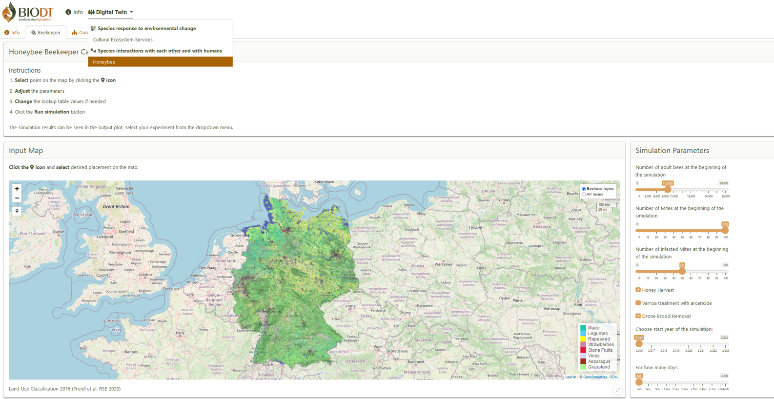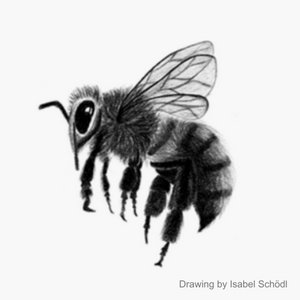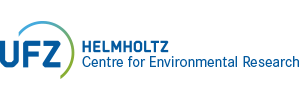Insect Pollinator Modelling

Honey bees and other insect pollinators are vital to human well-being and are under multiple stresses. Therefore, we try to assess the viability and productivity of honey bee colonies in different landscapes and under different management and climate-change scenarios. To do so we use a family of existing insect pollination models. The first model of this family the honey model BEEHAVE has been published in 2014 (Becher et al. 2014) and has recently been reimplemented in Go to increase its execution speed substantially. To be able to apply the BEEHAVE model on the national scale of Germany we have built a prototype digital twin together with colleagues in the BioDT project. This prototype Digital Twin uses land cover maps to approximate the resource availability for honey bees and weather data from the Deutsche Wetterdienst to inform the BEEHAVE model on the daily flight conditions (Groeneveld et al. 2024a). Furthermore, we work on meta models of BEEHAVE by applying machine learning techniques on large synthetical data set. Such meta models would be much more effective to apply the BEEHAVE model on large spatial and temporal scales. We are also keen on understanding the impact of multiple stressors on bumble bees. In the Ph.D. cohort SafePol four Ph.D. students will try to better understand the combined effect of heat and pesticides in agricultural landscapes on bumble bees (link to SafePol will be provided soon, Becher et al. 2018).

Selected Publications
- Groeneveld, J., Martinovic, T., Rossi, T., Salamon, O., Sara-aho, K., Grimm, V. (2024):
Prototype Biodiversity Digital Twin: honey bees in agricultural landscapes
Res. Ideas Outcomes 10 , e125167 10.3897/rio.10.e125167 - Groeneveld, J., Odemer, R., Requier, F. (2024):
Brood indicators are an early warning signal of honey bee colony loss—a simulation-based study
PLOS One 19 (5), e0302907 10.1371/journal.pone.0302907 - Reiner, D., Spangenberg, M.C., Grimm, V., Groeneveld, J., Wiegand, K. (2022):
Chronic and acute effects of imidacloprid on a simulated BEEHAVE honeybee colony
Environ. Toxicol. Chem. 41 (9), 2318 - 2327 10.1002/etc.5420 - Schödl, I., Odemer, R., Becher, M.A., Berg, S., Otten, C., Grimm, V., Groeneveld, J. (2022):
Simulation of Varroa mite control in honey bee colonies without synthetic acaricides: Demonstration of Good Beekeeping Practice for Germany in the BEEHAVE model
Ecol. Evol. 12 (11), e9456 10.1002/ece3.9456 - Becher, M.A., Grimm, V., Thorbek, P., Horn, J., Kennedy, P.J., Osborne, J.L. (2014):
BEEHAVE: a systems model of honeybee colony dynamics and foraging to explore multifactorial causes of colony failure
J. Appl. Ecol. 51 (2), 470 - 482 10.1111/1365-2664.12222
